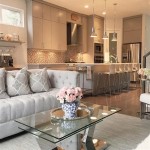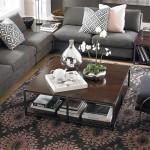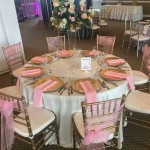Decorative Mirrors for Dining Room: A Guide to Amplify Space, Style, and Sophistication
Mirrors, with their ability to reflect light and create an illusion of depth, are indispensable decorative elements, especially in the dining room. A well-chosen mirror can transform a dining space, enhancing its ambiance, functionality, and aesthetic appeal. This article explores the myriad benefits and considerations when incorporating decorative mirrors into your dining room design.
Benefits of Decorative Mirrors in Dining Rooms
Expanded Space: Mirrors create an optical illusion of spaciousness by reflecting the room back on itself. In smaller dining rooms, a well-placed mirror can make the space feel larger and more inviting.
Improved Lighting: Mirrors reflect natural and artificial light, illuminating the dining room and creating a brighter, more welcoming environment. This is particularly beneficial in rooms with limited natural light.
Focal Point and Conversation Starter: A statement mirror can serve as a stunning focal point in the dining room, drawing attention and creating a conversation piece among guests.
Enhanced Ambiance: Mirrors add a touch of elegance and sophistication to any dining room. Their reflective surfaces evoke a sense of luxury and opulence, creating a refined and inviting atmosphere.
Types of Decorative Mirrors for Dining Rooms
Wall-Mounted Mirrors: These versatile mirrors are ideal for maximizing space in smaller dining rooms. They can be hung at eye level to reflect the table setting or placed strategically to create an illusion of depth.
Floor Mirrors: Floor mirrors are perfect for larger dining rooms or to create a dramatic focal point. They lean against walls or stand upright, reflecting the entire room and making it appear more spacious.
Over-the-Mantle Mirrors: In dining rooms with a fireplace, an over-the-mantle mirror adds symmetry and grandeur to the space. It reflects the fireplace and creates an inviting ambiance.
Choosing the Right Mirror for Your Dining Room
Consider the following factors when selecting a decorative mirror for your dining room:
Size and Shape: The size and shape of the mirror should complement the size and proportions of the dining room. Larger mirrors are suitable for spacious rooms, while smaller mirrors are better suited for smaller spaces.
Style: Choose a mirror that complements the overall style of your dining room. For traditional settings, consider ornate frames or antique mirrors. For modern spaces, opt for sleek, geometric designs.
Functionality: Determine the primary purpose of the mirror. If you want to create an illusion of space, choose a large, strategically placed mirror. If you prefer a focal point, opt for a statement mirror with an eye-catching frame.
Placement and Maintenance of Decorative Mirrors
Hang mirrors at eye level or slightly higher to prevent distortion. Position them opposite windows or light sources to maximize light reflection.
Regularly clean mirrors with a non-abrasive glass cleaner and a soft cloth to keep them looking sparkling clean.
Conclusion
Decorative mirrors are powerful tools to enhance the style, functionality, and ambiance of any dining room. By carefully considering the type, placement, and maintenance of your mirror, you can create a dining space that is not only beautiful but also inviting, sophisticated, and unforgettable.
:strip_icc()/dining-room-mirror-ideas-1-ashley-montgomery-b90b98cab74443e9ab4f9d5e9f6ac2d2.jpeg?strip=all)
17 Dining Room Mirror Ideas That Ll Dress Up Your Walls

How To Decorate Your Home With Mirrors In Some Stunning Ways World Inside S Mirror Dining Room Luxury Elegant

Transform Your Dining Room With A Mirror Decoholic

Decorate Using Oversized Mirrors Mirror Dining Room Living Decor

Transform Your Dining Room With A Mirror Decoholic

Exquisite Wall Mirrors That Will Rock Your Dining Room Decor

Enhancing Interior Decor With Wall Mirrors Majestic Glass

Transform Your Dining Room With A Mirror Decoholic

Dining Room Wall Mounted Mirror Traditional Salt Lake City By Massiv Brand Houzz Ie

Inexpensive Decorative Wall Mirrors Dining Room Contemporary With Blue Crown Molding Curtain Mirror Beautiful Rooms








